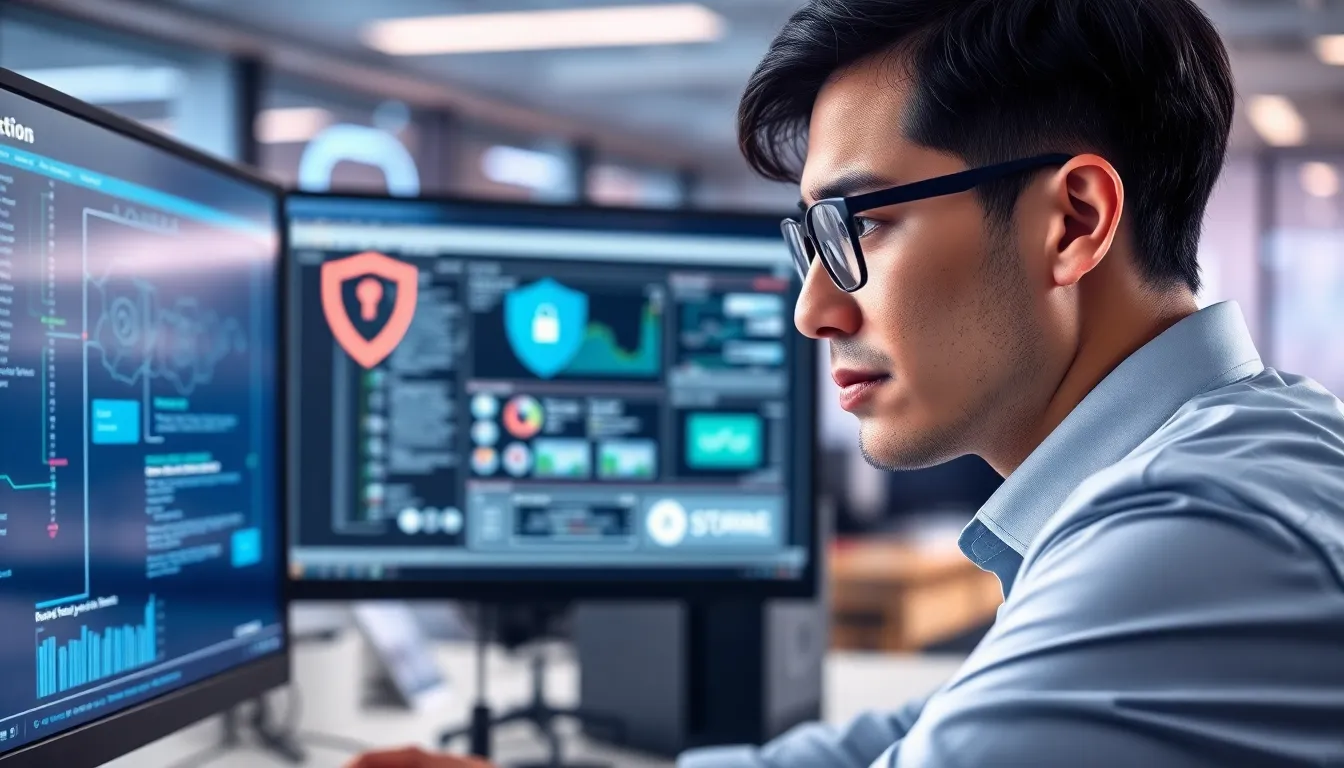In a world where software bugs are like uninvited guests at a party, Endbugflow stands as the bouncer, keeping the chaos at bay. But even the toughest bouncer needs backup. Protecting Endbugflow software is crucial to ensure it continues to deliver seamless performance and a bug-free experience.
How Endbugflow Software Can be Protected
Endbugflow serves as an essential tool for managing software bugs, ensuring a smooth user experience. Protecting this software maintains its performance and efficiency.
Overview of Endbugflow
Endbugflow streamlines bug tracking and resolution. Users tap into its intuitive interface, helping teams prioritize issues. The software becomes integral for developers, fostering collaboration and transparency. By analyzing bug data, Endbugflow enhances workflow efficiency. Continuous updates and user feedback drive improvements in functionality, solidifying its reputation.
Importance of Software Protection
Software protection safeguards sensitive data and user information. Maintaining security helps prevent breaches that could compromise user trust. Protecting Endbugflow ensures reliability and stability in bug management. Preventing unauthorized access minimizes potential disruptions in service. A robust security framework supports regulatory compliance and avoids potential legal issues. In the fast-evolving tech landscape, staying ahead of threats guarantees sustained performance and competitive advantage.
Common Threats to Endbugflow Software

Endbugflow faces several threats that could disrupt its efficiency and compromise user data. Understanding these threats fosters better protection strategies.
Cybersecurity Risks
Cybersecurity risks pose significant threats to Endbugflow. Malicious attacks such as phishing, malware injections, and ransomware can exploit vulnerabilities in software. Cybercriminals frequently target the sensitive data stored within Endbugflow, aiming to gain unauthorized access. Data breaches often lead to loss of trust from users and customers. Organizations must implement stringent security measures, including encryption and regular audits, to safeguard their systems. Staying updated on the latest security protocols helps mitigate the risk of these attacks.
Internal Vulnerabilities
Internal vulnerabilities can also weaken the security of Endbugflow. Inadvertent human errors, such as sharing login credentials, can lead to security breaches. Misconfigured settings within the software may create exposure points for unauthorized access. Regular employee training on security protocols reduces the risk of mistakes. Procedures should ensure that developers follow best practices during development and maintenance. Strengthening access controls helps prevent unauthorized actions from within the organization. Monitoring user behavior enhances the detection of potential threats.
Best Practices for Protecting Endbugflow Software
Protecting Endbugflow software requires adherence to best practices that address common security vulnerabilities. Effective strategies ensure the integrity of bug management processes and safeguard user data.
Regular Software Updates
Regular updates for Endbugflow software enhance security and performance. Developers consistently release patches and improvements that address known vulnerabilities. Organizations benefit from deploying these updates promptly, as they contain critical fixes that mitigate security risks. Updating software also ensures compatibility with other systems, preventing disruptions in operation. Teams should implement automated alerts to notify them about available updates, fostering a proactive approach to software maintenance. Regular patch management maintains a secure environment, reducing the likelihood of exploitation by cyber threats.
Using Strong Authentication Measures
Strong authentication measures significantly bolster the security of Endbugflow software. Multi-factor authentication (MFA) adds an essential layer beyond password protection, requiring additional verification steps. By using unique, complex passwords paired with MFA, organizations minimize the risks associated with unauthorized access. Regularly updating passwords also reinforces security, preventing easy breaches. Access control policies should restrict permissions based on user roles, ensuring that only authorized personnel interact with sensitive data. Implementing these strong authentication practices protects user trust and upholds data integrity within the software.
Implementing Security Protocols
Implementing robust security protocols strengthens Endbugflow against potential threats. These measures ensure that sensitive information remains protected and secure.
Data Encryption Techniques
Data encryption techniques serve as a primary line of defense. Endbugflow can utilize Advanced Encryption Standard (AES) to protect sensitive data at rest and in transit. AES provides a secure framework, making unauthorized access significantly challenging. Implementing end-to-end encryption further ensures that only authorized users can access confidential information. Organizations should also regularly update encryption keys to enhance security. Regular assessments of encryption protocols identify potential vulnerabilities, ensuring that data protection remains intact.
Access Control Strategies
Access control strategies play a vital role in safeguarding Endbugflow. Implementing role-based access control (RBAC) limits user permissions based on their responsibilities. This approach ensures that only authorized individuals can access critical areas of the software. Multi-factor authentication (MFA) adds an additional layer of security, verifying user identities through multiple methods. Regular audits of access logs can reveal unusual activity, allowing organizations to react swiftly. Additionally, reviewing and modifying permissions periodically keeps security protocols current, protecting against evolving threats.
Complex Digital Landscape
Protecting Endbugflow software is essential for maintaining its effectiveness in bug management. By implementing robust security measures organizations can safeguard sensitive data and enhance user trust. Regular updates strong authentication practices and strict access controls are vital components of a comprehensive security strategy.
As cyber threats evolve organizations must stay vigilant and proactive in their approach to security. Continuous employee training and regular audits further strengthen defenses against internal vulnerabilities. By prioritizing these protective measures Endbugflow can continue to deliver reliable performance while ensuring the safety of user information in an increasingly complex digital landscape.